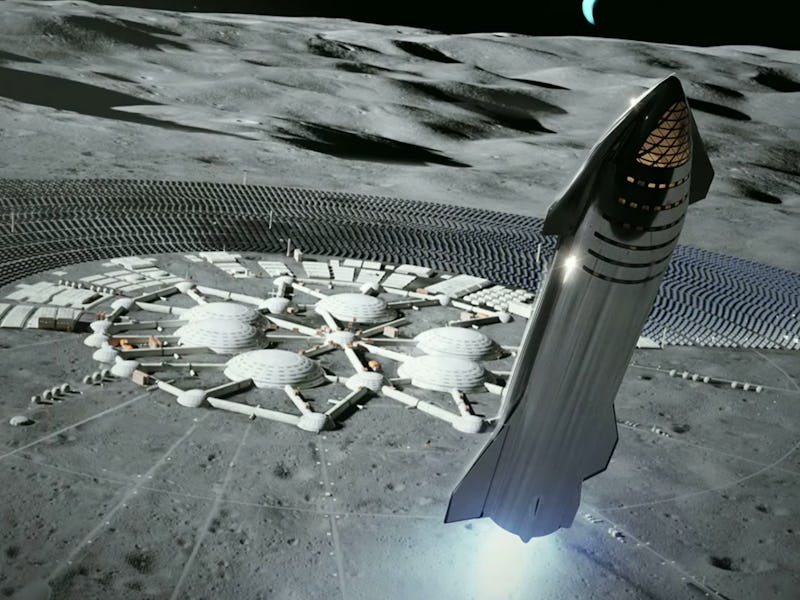Elon Musk calls on the public to "preserve human consciousness" with Starship
"I think we should become a multi-planet civilization while that window is open."

Elon Musk got philosophical on Saturday night in the darkness of south Texas, saying that humanity needs to get to Mars in order to preserve human consciousness.
While we have “several hundred millions of years left” before the sun expands and overheats the Earth, Musk attempted to put that into perspective, noting the Earth has been around for about 4.5 billion years, but humanity has been on Earth for a fraction of that.
“From an evolutionary standpoint, if it took and extra ten percent longer for conscious life to evolve on Earth, it wouldn’t evolve at all because it would’ve been incinerated by the sun,” the SpaceX CEO said at the end of a 40-minute presentation at the SpaceX Boca Chica Launch Facility.
Elon Musk on Saturday, September 28, 2019.
“It appears that consciousness is a very rare and precious thing and we should take whatever steps we can to preserve the light of consciousness. Only now, after 4.5 billion years has that window been open. That’s a long time to wait and it might not stay open for long. I’m pretty optimistic by nature, but there’s some chance that window will not be open for long, and I think we should become a multi-planet civilization while that window is open.”
The way to make that humanity a multi-planet species, and “extend consciousness beyond Earth,” in the eyes of Musk, was towering behind him.
Starship MK 1, a prototype rocket made of 301 stainless steel, could one day carry humans to the moon and to Mars.
Musk said people could potentially fly into orbit on the Starship next year.
The prototype vehicle will fly between 1-2 months from now.
“This will take off, fly to 65,000 feet and come back and land in 1-2 months. That giant thing is really going to be pretty epic to see that thing take off and come back,” Musk said. “It’s wild.”
MK3, the second, full-size version of the rocket system, will reach orbit within six months, Musk said. Crewed missions will launch from either Cape Canaveral, Florida, or Boca Chica, Texas.
Musk released several new details about the Super Heavy launch vehicle and the Starship that will carry crews into the solar system, though there were few fundamental changes from the master plan he introduced in 2016.
Starship Mk1 is what Musk stood before on Saturday night. It will go on a test flight in 1-2 months.
Starship will carry 150 tons of payload to orbit, Musk said. It will then park in orbit and be refilled with fuel for the rest of its journey to the “moon or Mars or beyond,” Musk said. While it sound complicated to connect a fuel ship to a different ship in orbit, refilling of fuel in orbit is a “simplified version of what SpaceX does with the space station,” he said.
The reusability of Starship and the Super Heavy launch vehicle, means they will return to Earth at a high speed, similar to how the Falcon 9 first stage returns to Earth.
Musk praised the stainless steel used in the rocket system for its strength under extreme heat and cold, strength to weight ratio, and economical price when compared to carbon fiber. The ship was welded together int he outdoors at the launch facility in Texas. He also said that on Mars the steel could be used and modified for other needs. Musk made the decision to switch the material to steel in October 2018, saying it took between four and five months to build.
An artist's rendering of Starship near Saturn.
The Super Heavy launch vehicle could fit up to 37 Raptor engines and a minimum of 24 engines. Each would create 200 tons of thrust.
Musk’s ultimate goal is to build technology capable of sending crews of around 100 people to Mars, to build a self-sustaining city, suggesting that “Mars could help Earth one day.”
Read more: How SpaceX got to this point